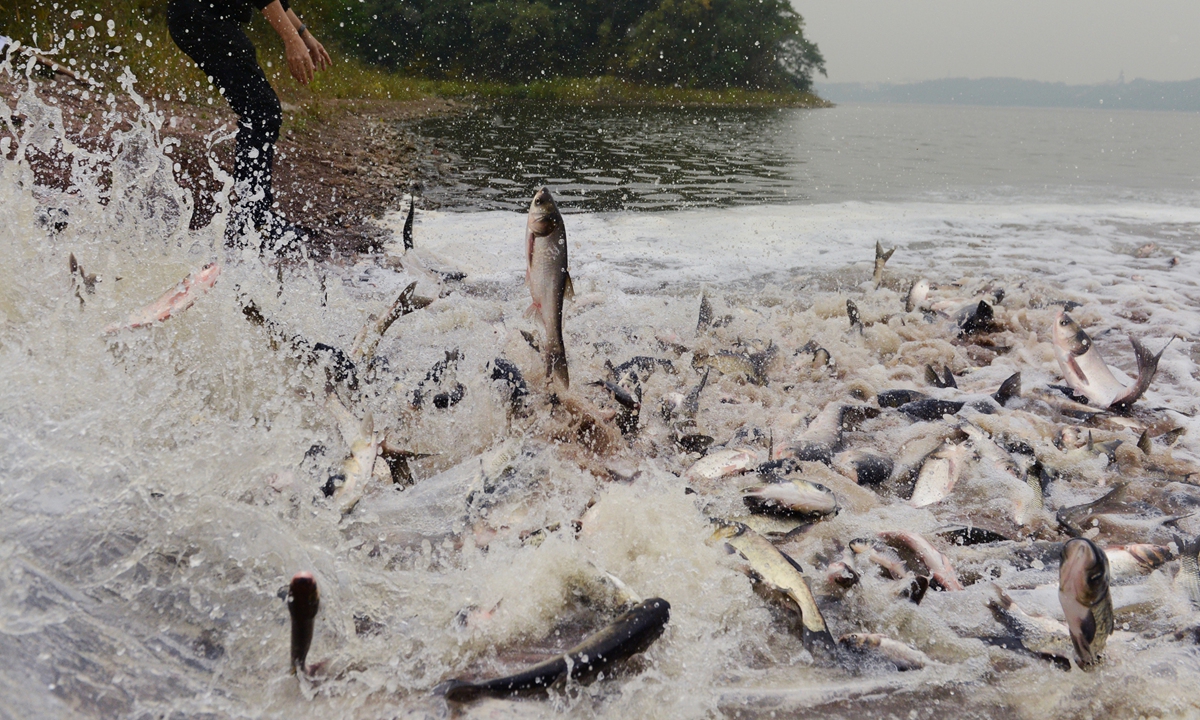
New research has shown that grass carp, a fish that is popular with diners in eastern China, appeared 30 million years ago in western China's dessert plateau before gradually making its way east. Photo: VCG
New research has shown that grass carp, a fish that is popular with diners in eastern China, appeared 30 million years ago in western China's desert plateau before gradually making its way east.
The grass carp appeared in western parts of China around 30 million years ago during the early Oligocene age (around 34 million years ago), based on an exciting public announcement made jointly by researchers from the Chinese Academy of Sciences and The Guangxi Natural Museum.
The eating habit and living environment of the fish were incredibly different from where they live and eat now, the research team said.
Just as the name indicates, grass carp are a large, herbivorous species. The team noted that it is seen by the public as a "weed cleaner in the waters." But their ancestors started as carnivores when they first appeared.
The fish are now found in the Yellow River's midstream and downstream in eastern China, but the research team said they used to live in dry plateau areas of western China. This indicates that the northerly part of western China - or the western part of Inner Mongolia Autonomous Region to be more specific - "must have had large areas of lakes or rivers," said the research team in the announcement.
"It is very different from the current local environment, which is dominated by grasslands, deserts, sand dunes and high alkaline ponds."
The team further noted that the climate was much "warmer and more humid than it is today" in the region.
Yet with the increased elevation of the Qinghai-Tibet Plateau since the Pliocene era (around 5.3 million years ago), large rivers in East Asia flowed eastward into the Pacific Ocean, carrying the species east and finally being "restricted to where they live now."
The research has been published as a scientific paper in China's academic magazine Science China, Earth Science.



